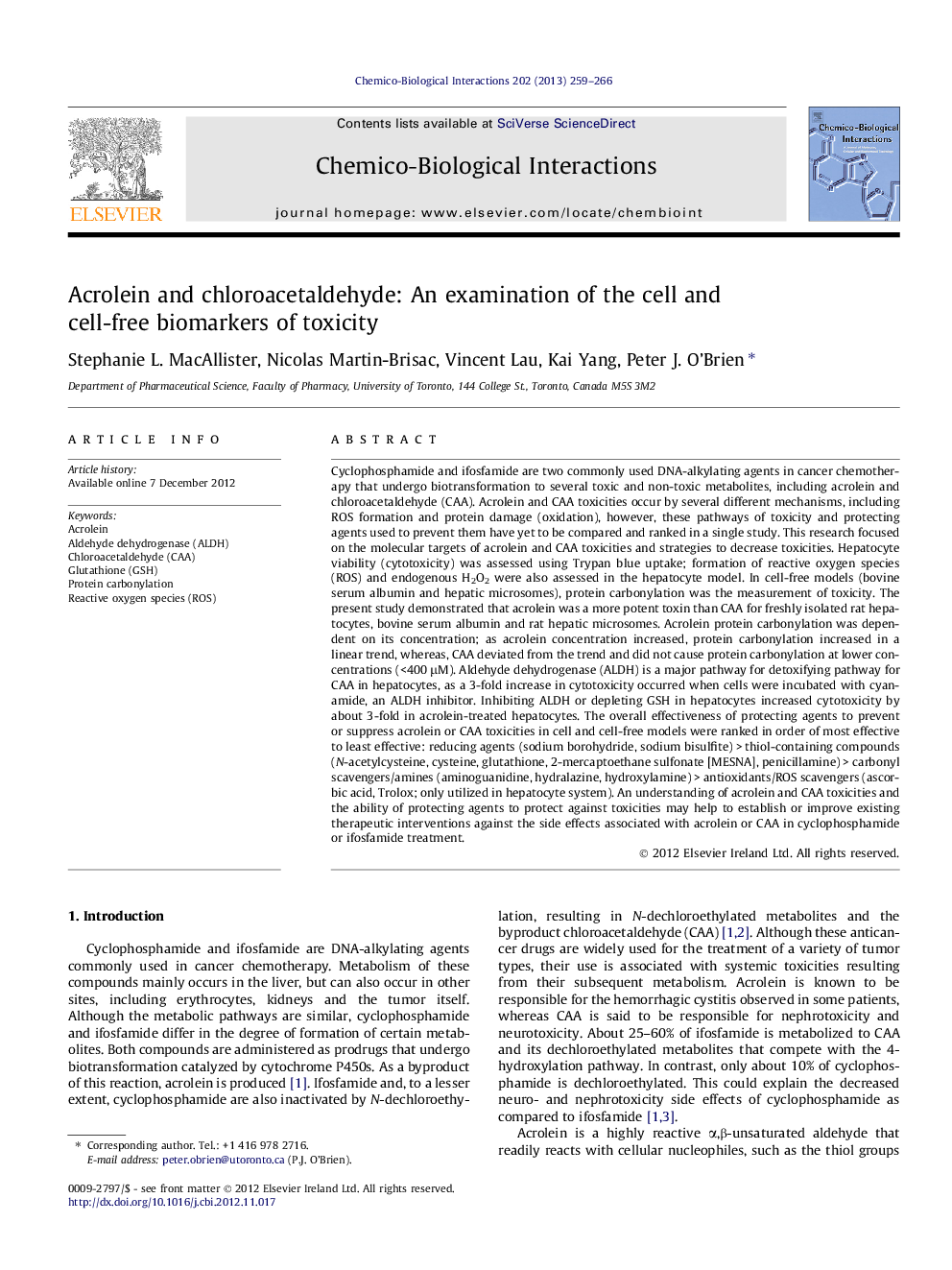| کد مقاله | کد نشریه | سال انتشار | مقاله انگلیسی | نسخه تمام متن |
|---|---|---|---|---|
| 2580664 | 1561635 | 2013 | 8 صفحه PDF | دانلود رایگان |

Cyclophosphamide and ifosfamide are two commonly used DNA-alkylating agents in cancer chemotherapy that undergo biotransformation to several toxic and non-toxic metabolites, including acrolein and chloroacetaldehyde (CAA). Acrolein and CAA toxicities occur by several different mechanisms, including ROS formation and protein damage (oxidation), however, these pathways of toxicity and protecting agents used to prevent them have yet to be compared and ranked in a single study. This research focused on the molecular targets of acrolein and CAA toxicities and strategies to decrease toxicities. Hepatocyte viability (cytotoxicity) was assessed using Trypan blue uptake; formation of reactive oxygen species (ROS) and endogenous H2O2 were also assessed in the hepatocyte model. In cell-free models (bovine serum albumin and hepatic microsomes), protein carbonylation was the measurement of toxicity. The present study demonstrated that acrolein was a more potent toxin than CAA for freshly isolated rat hepatocytes, bovine serum albumin and rat hepatic microsomes. Acrolein protein carbonylation was dependent on its concentration; as acrolein concentration increased, protein carbonylation increased in a linear trend, whereas, CAA deviated from the trend and did not cause protein carbonylation at lower concentrations (<400 μM). Aldehyde dehydrogenase (ALDH) is a major pathway for detoxifying pathway for CAA in hepatocytes, as a 3-fold increase in cytotoxicity occurred when cells were incubated with cyanamide, an ALDH inhibitor. Inhibiting ALDH or depleting GSH in hepatocytes increased cytotoxicity by about 3-fold in acrolein-treated hepatocytes. The overall effectiveness of protecting agents to prevent or suppress acrolein or CAA toxicities in cell and cell-free models were ranked in order of most effective to least effective: reducing agents (sodium borohydride, sodium bisulfite) > thiol-containing compounds (N-acetylcysteine, cysteine, glutathione, 2-mercaptoethane sulfonate [MESNA], penicillamine) > carbonyl scavengers/amines (aminoguanidine, hydralazine, hydroxylamine) > antioxidants/ROS scavengers (ascorbic acid, Trolox; only utilized in hepatocyte system). An understanding of acrolein and CAA toxicities and the ability of protecting agents to protect against toxicities may help to establish or improve existing therapeutic interventions against the side effects associated with acrolein or CAA in cyclophosphamide or ifosfamide treatment.
Journal: Chemico-Biological Interactions - Volume 202, Issues 1–3, 25 February 2013, Pages 259–266